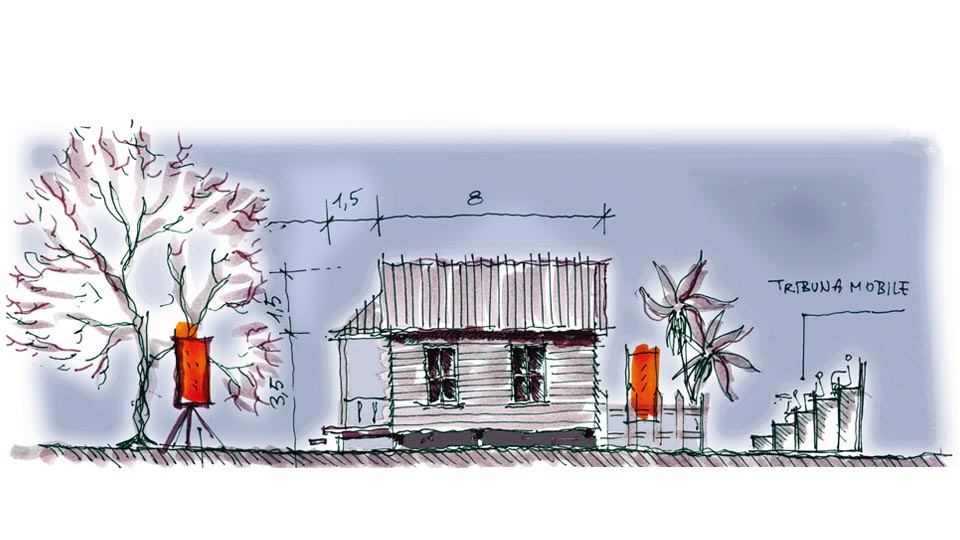The Rose Tattoo
Multimedia, Interactive and Flexible Scenography for Tennessee Williams' Rose Tattoo
Year
2005
Type
Culture
Size
M
Status
Concept Design
Project team
P.I.U. architecture Rome
Location
Global
Client
Michael Margotta - Actor’s Center
Concept
The scene is conceived to be flexibly indeterminate. All the elements can be freely moved, to completely reconfigure the scene. The play can also be staged outside the normal venues of a theatre or a specialized performance space, widening the range of possible locations to industrial buildings, open urban and natural spaces, monuments and archaeological sites. The light architectural system lends itself to presenting the work of Tennessee Williams in an interactive and disconcerting way. The public is invited to guess, listen, and observe indirectly on the external screens, in real-time, what is being performed inside the small house in the middle of the scene. The little house is rendered as the ideal shingle-style housing, with its iconic, impeccable American lawn. Around the real scale house, the public is accommodated on small groups of seats, broken up and scattered among the trees, videos and other elements of the fragmented scenography. As a result, the play is viewed in a fragmentary and interrupted manner, even if the show is performed in real time, under the eyes of all. This scenography tries to redefine the direct theatrical experience, contaminating it with the indirect and artificial communication of tv and other virtual media.
La scenografia è pensata per essere itinerante e flessibile. Gli elementi componenti possono muoversi liberamente a riconfigurare completamente la scena. L’opera può essere allestita anche in spazi non prettamente teatrali o classicamente ricettivi, ampliando la gamma degli edifici ospitanti anche ad edifici industriali, spazi aperti urbani e naturali, monumenti e siti archeologici. Il progetto mira a mettere in scena in modo interattivo e straniante l’opera di Tennessee Williams. Il pubblico è invitato ad intuire, ascoltare, osservare indirettamente sui video esterni ciò che in tempo reale sta accadendo all’interno della piccola casa posta al centro della scena. La scenografia gioca sulla creazione di un’abitazione tipica shingle style, e sul suo impeccabile “prato americano”. Intorno a questa abitazione in scala reale, il pubblico siede su piccole tribune frammentarie, isolate e sparse tra alberi, schermi per videoproiezione e altri elementi della scena stessa. In questo modo, l’opera è costantemente spiata, frammentata ed interrotta anche se si sta svolgendo in tempo reale, al centro della scena, sotto gli occhi di tutti. La scenografia mira a ridefinire l’esperienza teatrale diretta, contaminandola con tempi e modi della comunicazione indiretta e artificiale dei media televisivi e virtuali.



